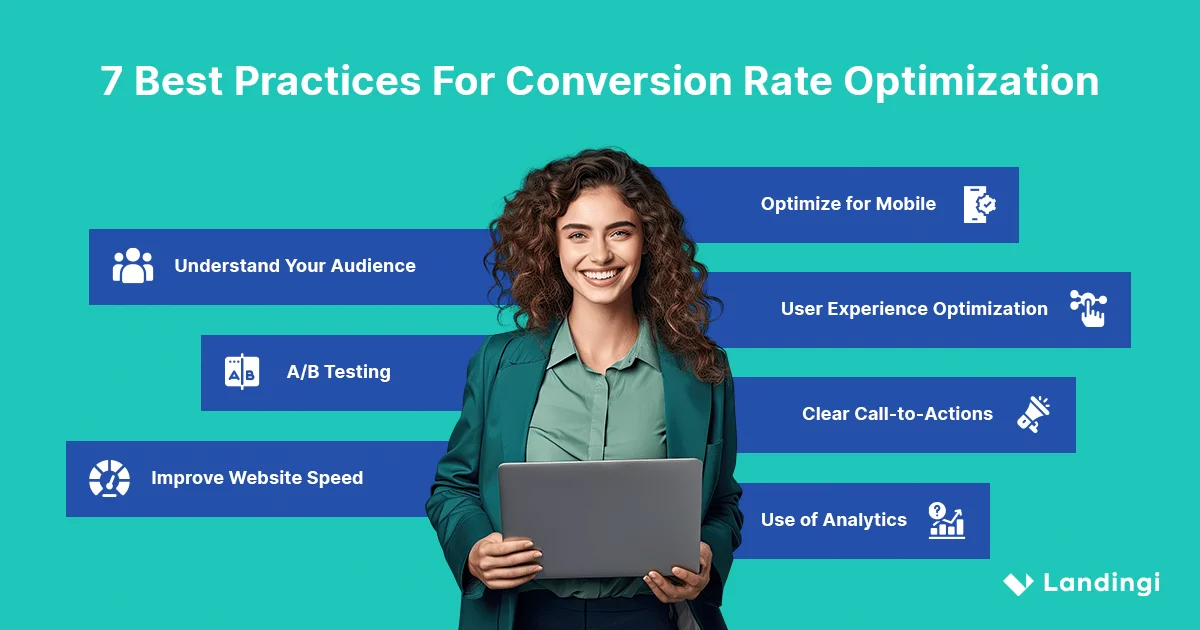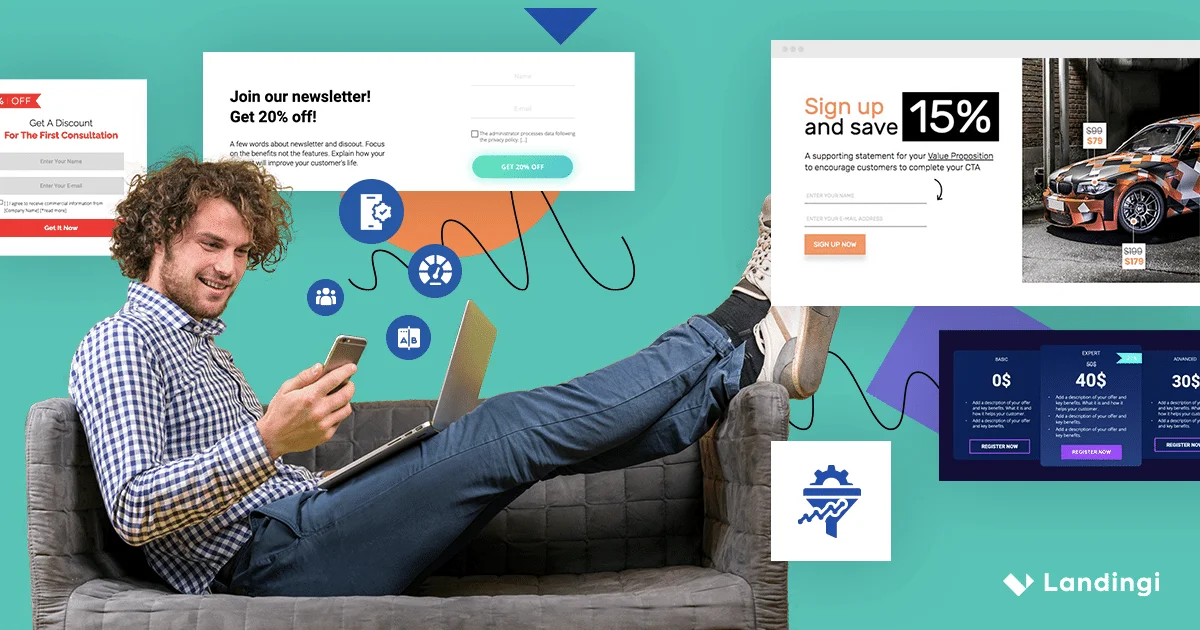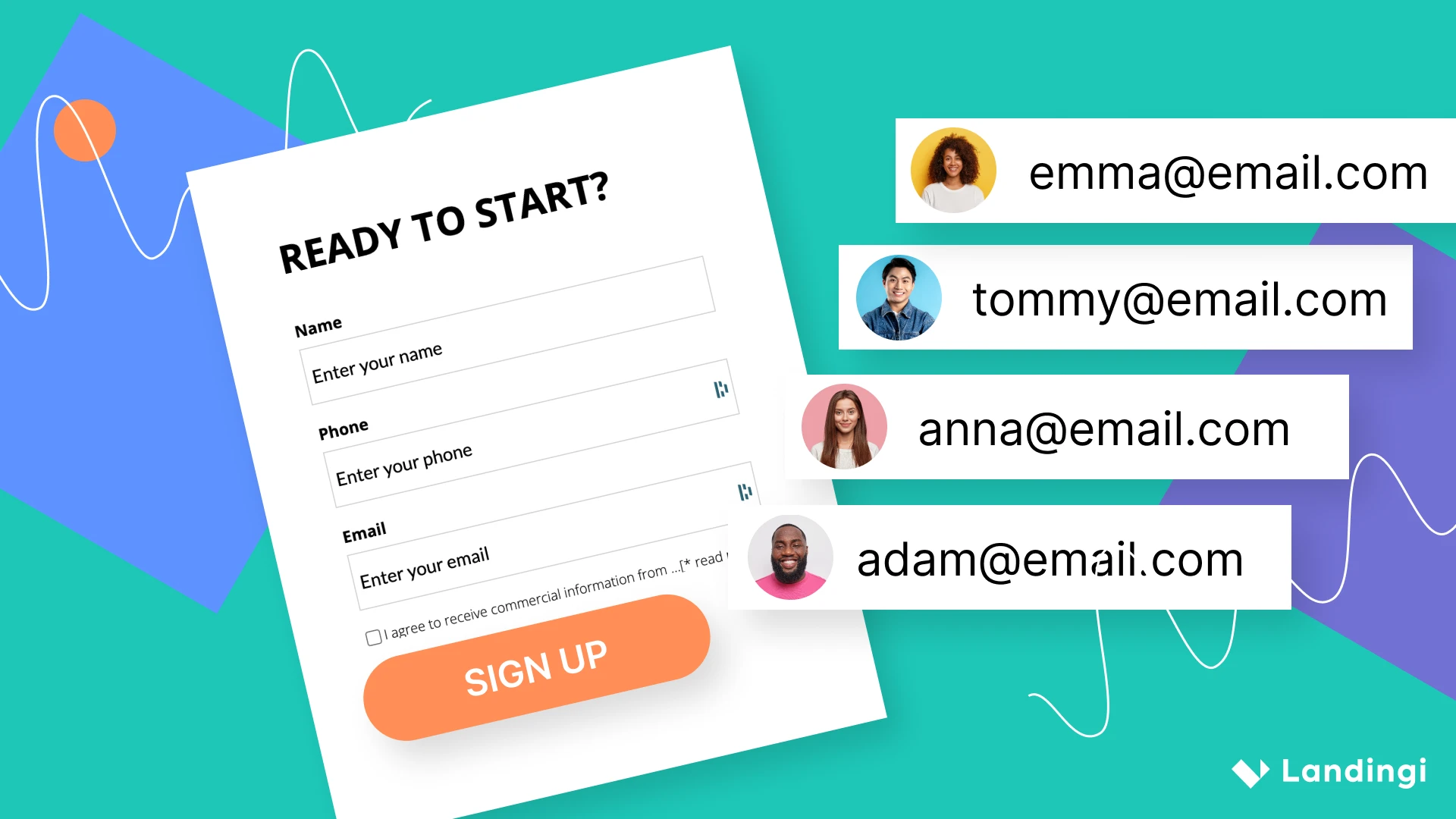At its core, CRO is the art and science of enhancing your website and its elements to increase the percentage of visitors who complete a desired action. Whether it’s making a purchase, signing up for a newsletter, or filling out a contact form, conversion rate optimization focuses on turning your passive website visitors into active participants. But it’s more than just a tactic; it’s a continuous process of learning, testing, and refining.
In this guide, we will delve into the various components of CRO, also known as conversion optimization, from understanding your audience and their behavior to implementing A/B testing and analyzing data. We’ll explore the tools and techniques that are essential for effective online performance improvement and provide insights into how you can tailor these strategies to fit your unique business needs.
Make your sections smartable and let go of mundane manual tasks with Smart Sections! An easy way to manage bulk changes.
What Is Conversion Rate Optimization?
Conversion Rate Optimization (CRO) is a systematic process of increasing the percentage of website visitors who take a desired action — be it by filling out a form, becoming customers, or otherwise.
The process involves understanding how users move through your site, what actions they take, and what’s stopping them from completing your goals.
Neil Patel, a recognized expert in digital marketing, in his article “Conversion Rate Optimization: What It Is and 20 Tips to Increase Conversions”, defines CRO as “a digital marketing strategy aimed at increasing the amount of visitors who take a specific action on your website.” This definition underscores the fundamental goal of digital marketing: not just to attract traffic but to convert this traffic into tangible results. This highlights the importance of not only driving visitors to a website but also effectively guiding them towards fulfilling the site’s primary objectives.
What is CRO in marketing?
CRO in marketing focuses on strategies that persuade Internet users to take specific actions that lead to conversion. This could involve changes in marketing tactics, content adjustments, or even altering the overall sales funnel.
The conversion rate optimization process is integral to marketing, as it directly impacts the effectiveness of various marketing efforts. By analyzing data and user feedback, marketers can make informed decisions to enhance the user experience and tailor their strategies to meet the specific needs and preferences of their target audience. Effective CRO leads to higher conversion rates, which means more sales, sign-ups, or other desired actions from the same amount of traffic, thereby improving the return on investment (ROI) for marketing campaigns.
What is CRO in SEO?
CRO in SEO is about making your website more user-friendly and content more compelling to not only attract visitors via search engines but also to encourage them to convert once they land on your site.
While conversion rate optimization and search engine optimization (SEO) are distinct strategies, they complement each other in improving a website’s performance. SEO focuses on increasing a website’s visibility and attracting more traffic through search engine rankings, while CRO aims to convert this traffic into meaningful actions.
When combined effectively, these strategies can lead to a significant boost in a website’s overall performance.
For instance, a well-optimized site for SEO attracts more visitors, and if the site is also optimized for conversions, it increases the likelihood of these visitors taking the desired actions. Moreover, search engines like Google consider user behavior signals such as time spent on site and bounce rate, which are directly influenced by how well a site is optimized for conversions.
What is conversion rate optimization for a website?
For a website, CRO involves a range of activities from A/B testing, user experience (UX) improvements, content refinement, to technical enhancements, all aimed at increasing the percentage of visitors who complete the website’s intended goal.
To implement website optimization effectively, it’s essential to follow a structured approach. This involves five of the following tactics:
- Data Analysis: Understanding current performance by analyzing website data to identify areas for improvement.
- User Feedback: Gathering insights from real users through surveys, feedback forms, and usability tests to understand their experience and pain points.
- Hypothesis Development: Based on the data and feedback, formulating hypotheses on what changes could lead to better conversion rates.
- Testing: Implementing A/B testing or multivariate testing to experiment with different versions of web pages to see which performs better in terms of conversions.
- Learning and Refining: Analyzing the results of these tests, learning from them, and continuously refining the website to optimize for higher conversion rates.
Why Is Conversion Rate Important?
Conversion rate is important because it directly indicates how well a website is performing in relation to its primary objectives.
The importance of conversion rate lies in its ability to measure the effectiveness of your website at persuading visitors to take the desired action. A high conversion rate indicates successful marketing and web design, implying that people want what you’re offering and are easily able to get it. Optimization efforts are also crucial, as they help to identify and address any barriers that may prevent visitors from converting.
Below we have listed 5 main reasons why conversion rate is crucial:
- Maximizing Return on Investment (ROI): A higher conversion rate leads to more efficient use of site traffic and cost-effective marketing, enhancing ROI.
- Enhanced User Experience: Good conversion rates reflect a user-friendly and relevant website, improving user experience and building trust.
- Competitive Advantage: High conversion rates provide a competitive edge in the market and yield deeper insights into customer trends and preferences.
- Scalability of Business: Optimizing conversion rates enables sustainable growth and confident resource allocation for business scaling
- Data-Driven Decisions: Conversion rates offer measurable outcomes for strategic planning and foster a culture of continuous improvement and performance optimization.
CR is not just a number; it’s a reflection of how well a business understands and fulfills its customers’ needs. A strong conversion rate is indicative of an effective, customer-centric business strategy, and it’s a key driver for growth, profitability, and long-term success in the digital world.
How To Calculate Conversion Rate?
Conversion rate (CR) is calculated by dividing the number of conversions by the total number of website visitors and multiplying the result by 100 to get a percentage.
The formula for calculating the conversion rate is:
For instance, if your website had 500 conversions and 10,000 visitors last month, the conversion rate would be 500 / 10,000 * 100% = 5%.
A 5% conversion rate means that out of every 100 visitors, 5 took the action you defined as a conversion. This metric helps you gauge the effectiveness of your site and marketing efforts in engaging and persuading visitors.
It’s important to regularly calculate and monitor your conversion rate. This helps in identifying trends, understanding the impact of changes made to your website or marketing strategies, and making data-driven decisions to improve performance. For more detailed insights, you can calculate conversion rates for different segments of your audience, different marketing channels, or different types of conversions. This helps in understanding which areas are performing well and which need improvement.

What Is a Good Conversion Rate?
A good conversion rate is a reflection of your marketing strategy’s effectiveness, audience alignment, and the overall user experience your digital presence offers. Industry benchmarks vary widely, with average rates hovering around 2-5%, but these figures can be misleading. A study by WordStream found that the average landing page conversion rate across industries is 2.35%, yet the top 25% are converting at 5.31% or higher.
A good CR is less about outperforming generic benchmarks and more about surpassing your past performance, aligning with your specific industry standards, and meeting the unique expectations of your target audience.
To truly understand what a good conversion rate is for your specific context, it’s essential to consider several factors. First, the nature of your business and industry plays a significant role. E-commerce sites might have different benchmarks compared to B2B service providers. Secondly, the source of your traffic is pivotal. Organic search traffic might convert differently compared to paid advertising or social media referrals. Additionally, the quality of your website, including its design, content, and user experience, directly impacts conversion rates. Website visitors are also a crucial factor to consider, as the behavior and preferences of your audience can significantly influence the results.
A good conversion rate, therefore, is one that not only aligns with industry standards but also reflects continuous improvement and optimization in your marketing efforts. It’s about setting realistic goals based on your historical data, industry type, and traffic sources and then striving to exceed those benchmarks through strategic testing, personalization, and user experience enhancement. A great CR is a moving target, always evolving with market trends, consumer behaviors, and technological advancements.
Make your sections smartable and let go of mundane manual tasks with Smart Sections! An easy way to manage bulk changes.
What Are The 7 Best Practices For Conversion Rate Optimization?
The 7 best practices for CR optimization are listed below:
- Understand Your Audience
- A/B Testing
- Improve Website Speed
- Optimize for Mobile
- User Experience Optimization
- Clear Call-to-Actions
- Use of Analytics
Implementing these conversion rate optimization strategies can significantly enhance the effectiveness of your websites, landing pages, and overall marketing campaigns. The key to successful CRO lies in continuous testing, learning, and adapting based on real user data and feedback.
Let’s delve deeper into the seven best practices for conversion rate optimization.
1. Understand Your Audience
Understanding your audience goes beyond basic analytics. It involves a deep dive into demographics, such as age, gender, location, and interests, to tailor content and design. Behavioral analysis through tools like heatmaps and session recordings reveals how users interact with your landing pages, highlighting what captures attention. Additionally, collecting direct feedback from users and potential customers through surveys or polls can be invaluable in understanding their needs and pain points.
2. A/B Testing
A/B testing should be an iterative process. Regularly test different elements like headlines, images, and button colors, as small changes can lead to significant improvements. Conduct segmented testing for different audience segments, as what works for one group may not work for another. Importantly, base your changes on data from these tests, rather than gut feelings or trends.
3. Improve Website Speed
Optimizing your website for speed involves techniques like compressing images, leveraging browser caching, and minimizing heavy scripts. Regular monitoring with tools like Google PageSpeed Insights is essential, as every second reduced in loading time can significantly improve user experience and conversion rates.
4. Optimize for Mobile
With the growing predominance of mobile traffic, a mobile-first approach is often advisable. Ensure your landing pages render well on all devices and are touch-friendly, with easy-to-tap buttons and links, and content that is easily readable without zooming.
5. User Experience Optimization
Another best practice for conversion rate optimization is optimizing user experience. It involves creating intuitive navigation for a clean, logical layout that helps users find what they need without frustration. Consistent branding in visual and textual elements is also crucial for reinforcing brand recognition and trust.
6. Clear Call-to-Actions
CTAs should be visible, clear, and specifically state the desired action, like “Download Free E-book” or “Get Started Today.” Strategic placement of CTAs both above and below the fold, and within blog posts where relevant, is essential to capture users at different stages of their visit.
7. Use of Analytics
Effective CRO involves setting up conversion tracking in web analytics tools like Google Analytics to understand which sources are most effective. Analyzing the paths potential customers take on your site helps identify where they drop off, allowing you to optimize those pages to improve the flow towards conversion.

Which Tools Are Used For CRO?
Tools used for CRO comprise analytics, testing, user behavior analysis, and landing page optimization tools, with the latter being particularly useful for creating and optimizing landing pages, which are a critical component in CRO strategies.
With these four types of conversion rate optimization tools, marketers can significantly enhance their efforts, leading to higher conversion rates and better overall campaign performance.
Here is a list of conversion rate optimization tools for each category, accompanied by a brief description.
1. Analytics Tools
- Google Analytics: The most widely used tool for tracking website traffic, user behavior, and conversion metrics. It helps in understanding how users interact with your site.
- Adobe Analytics: Offers advanced segmentation and real-time analytics capabilities, ideal for larger businesses with complex data needs.
- Mixpanel: Focuses on user interaction with web and mobile applications, providing detailed insights into user engagement and retention.
2. Testing Tools
- Optimizely: A popular A/B testing tool that allows you to test different versions of webpages to see which performs better in terms of conversions.
- VWO (Visual Website Optimizer): Offers A/B testing, split testing, and multivariate testing, along with other features like heatmaps and session recordings.
- Landingi: Known for its landing page testing capabilities, allowing marketers to quickly create and test different landing page variants.
3. User Behavior Analysis Tools
- Hotjar: Provides heatmaps, session recordings, and surveys to understand how users interact with your site and gather direct feedback.
- SurveyMonkey: A tool for creating and distributing surveys to gather user feedback and insights.
- UserTesting: Offers real-time user feedback and testing, allowing you to see how actual users interact with your site.
4. Landing Page Optimization Tools
- Landingi: A comprehensive tool for creating, optimizing, and testing landing pages. It offers a wide range of customizable templates, drag-and-drop functionality, event tracking, and A/B testing capabilities.
- Leadpages: Known for its easy-to-use landing page templates and conversion tools like pop-ups and alert bars.
- Instapage: Provides a robust landing page platform with detailed analytics and A/B testing features.
How to improve conversion rates on landing pages?
To improve conversion rates on landing pages, you need to use effective strategies. These include creating compelling headlines and engaging content, using powerful CTA, incorporating relevant images and videos, simplifying the design, optimizing for mobile devices, improving loading speed, providing social proof and testimonials, personalizing the experience, analyzing and testing the results, and utilizing landing page optimization tools.
Platforms like Landingi can be beneficial in the process of designing and testing landing pages for optimal conversion. With various features like A/B testing, customizable templates, and integration with analytics tools, Landingi makes it easy to increase conversion rates, create, and optimize landing pages, even for those without technical or design skills. Here’s how Landingi can help you improve your conversion results:
- Drag-and-Drop Interface: Easy-to-use editor for creating and adjusting landing pages quickly. It allows for quick adjustments and iterations.
- Template Library: A wide range of industry-specific, conversion-optimized templates which are optimized for conversions, based on best practices in design and user experience
- A/B Testing: A simple tool for conducting A/B/x tests to identify the most effective page elements. Works superbly with the in-app campaign scheduler.
- Marketing Tool Integration: Seamless integration with various marketing and analytics tools to streamline your marketing funnel.
- Lead Capture Optimization: Advanced features for creating customized, effective lead capture forms.
- Responsive Design: Ensures landing pages are mobile-friendly, enhancing user experience and SEO. This responsiveness positively impacts search engine rankings.
- Customization and Personalization: Extensive options to tailor pages to specific audiences and branding.
- Real-Time Analytics: Tracks performance and provides insights for ongoing optimization. Landingi offers a one-of-a-kind event tracking tool inside the platform.
- SEO Tools: Features to improve search engine visibility, drive organic traffic, and improve site speed.
- Support and Resources: Access to customer support, webinars, e-books, tutorials, and other educational materials for maximizing page effectiveness.
Get 111 Landing Page Examples—The Ultimate Guide for FREE
What is the best conversion strategy?
The best conversion strategy is an approach that combines understanding your audience, continuous testing, and optimizing all elements of your website and marketing efforts. This strategy should also be flexible enough to adapt to changing market trends and customer preferences.
Why is it important to perform a CRO audit?
Performing a CRO audit is crucial as it helps identify areas of improvement in your website, ensuring that you are providing the best possible experience to your visitors. Additionally, it allows for data-driven decisions that can significantly boost conversion rates.
How to use CRO in e-commerce?
To use CRO in e-commerce, you can optimize your product pages, simplify the checkout process, and personalize the shopping experience for your users. By doing so on your e-commerce site, you can enhance customer satisfaction, which can lead to increased sales and loyalty.
Which blogs focus on conversion rate optimization (CRO)?
Best blogs that focus on CRO include ConversionXL, Neil Patel’s Blog, and Moz Blog. They are known for their valuable insights and up-to-date trends in conversion rate optimization, making them essential resources for marketers and website owners.
How to use A/B testing for CRO?
A/B testing for CRO involves comparing two versions of a webpage to see which performs better in terms of conversions. To conduct successful experimenting, it’s important to focus on those elements that have the most significant impact on user behavior. Before starting tests, it’s a good idea to get inspired by real-life A/B testing examples and case studies.
How to optimize CTA for CRO?
Optimizing CTAs for CRO involves using persuasive language, making them visually striking, and placing them strategically on the page. You can improve your call-to-action by using persuasive language that resonates with your target audience, making them visually eye-catching, and placing them strategically on the page. It is also essential to ensure that CTAs are relevant to the content on the page. You can study effective CTAs by reviewing landing pages that encourage visitors to take action.
How to optimize the conversion funnel for CRO?
Optimizing the conversion funnel for CRO entails streamlining the path from initial interest to final conversion, removing any unnecessary steps or barriers. Conversion funnel analysis allows for data-driven decisions to be made in order to improve the user journey and ultimately increase conversions.
What should you avoid during conversion rate optimization?
During conversion rate optimization, avoid making assumptions without data, neglecting mobile users, as well as neglecting mobile users or overlooking the significance of page load speed. It’s also crucial to avoid overwhelming users with too many choices or complex navigation, which can lead to decision fatigue and lower conversion rates.
Conclusion
Conversion Rate Optimization (CRO) is an essential aspect of digital marketing that aims to convert website visitors into active participants who complete desired actions. CRO involves continuous learning, testing, and refinement, which can positively impact both marketing and SEO. Utilizing best practices and tools such as Landingi, which offers A/B testing and customizable templates, can improve user experience and increase conversions. CRO plays a crucial role in converting passive visitors into engaged customers, driving a business’s digital success.






